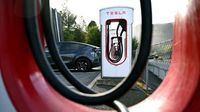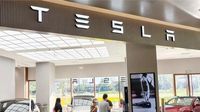Tesla’s dominance in the European electric vehicle (EV) market has hit a rough patch, and the numbers are impossible to ignore. In July 2025, Tesla’s new car registrations across Europe nosedived by a staggering 40% year-over-year, totaling just 8,837 units, according to the European Automobile Manufacturers Association (ACEA). This marks the company’s seventh consecutive month of declining sales in the region—a stark contrast to the broader European EV market, which continued to grow, posting a healthy 15% uptick in battery-electric vehicle demand during the same period (as reported by the European Market Monitor: Cars and Vans, July 2025).
As if the raw sales figures weren’t enough, Tesla’s market share in Europe has also taken a significant hit. In the second quarter of 2025, Tesla’s share dropped from 2.4% to just 1.6%, with total sales falling 33% to 109,264 units. Meanwhile, Chinese automaker BYD—whose presence in Europe was once considered peripheral—registered 13,503 vehicles in July alone, up a jaw-dropping 225% from the prior year. In Germany, BYD’s July sales soared 390%. The signal is clear: Chinese EV makers are not only here, but they’re outpacing Tesla on its former turf.
What’s fueling this reversal? Analysts and industry observers point to a combination of factors. First, Tesla’s product lineup in Europe is showing its age. The standard Model Y, last updated in 2023, is struggling to keep pace with a new generation of competitors. The Hyundai Ioniq 5, for example, offers a 300-mile range, ultra-fast charging (80% in just 18 minutes), and a price tag of €44,200—significantly undercutting the Model Y’s €62,000 base price in Germany. BYD’s Sealion 7, with a 350-mile range and localized production in Germany, has seen a 390% sales surge in the region, further eroding Tesla’s market share.
Second, Tesla has failed to introduce any major new models in Europe this year—until now. In August 2025, Tesla launched the Model Y Performance, its most aggressive offering yet for European buyers. This high-performance trim boasts 0–100 km/h acceleration in 3.5 seconds, 460 horsepower, and a WLTP range of 580 km. Design upgrades, including 21-inch forged alloy wheels, a redesigned rear spoiler, and adaptive suspension, aim to position it as a premium, sport-optimized SUV. Inside, a 16-inch touchscreen and performance-themed badging are meant to appeal to both enthusiasts and families. The car’s €62,000 price tag places it above the base Model Y but below luxury rivals like the Audi e-tron GT RS, which starts at €106,500.
Tesla is banking on its Berlin-Brandenburg Gigafactory to reduce lead times and localize production, a critical advantage over Chinese rivals reliant on cross-border logistics. The Model Y Performance also benefits from Tesla’s extensive Supercharger network, which remains a key differentiator for long-distance travel. However, its success depends on whether its premium pricing can compete with the growing appeal of more affordable alternatives. As one analyst put it, "Tesla’s Achilles’ heel is its aging product lineup. The standard Model Y, last updated in 2023, struggles to compete with newer models from rivals. BYD’s rapid innovation cycle and localized battery production have allowed it to undercut Tesla on both price and range." (AInvest.com News)
Beyond the showroom floor, other headwinds have emerged. Tesla’s inability to secure regulatory approval for its Full Self-Driving feature in Europe has diminished its technological edge, especially as local competitors close the gap on software and autonomy. Meanwhile, CEO Elon Musk’s increasingly controversial political stances and public statements have damaged Tesla’s brand in socially conscious European markets, where consumers are putting a premium on ethics and leadership transparency. This reputational risk, coupled with rising tariffs and regulatory scrutiny, has made Tesla’s path to recovery even steeper.
Investors have taken notice. As of August 29, Tesla stock was trading at $345.75, down 1.1% in the past 24 hours. The stock has been consolidating between the $330–$360 range over recent sessions, with technical indicators suggesting indecision among traders. Tesla’s forward price-to-earnings (P/E) ratio of about 189 and trailing P/E above 200 continue to place it at a substantial premium compared to peers. While some bulls argue this reflects Tesla’s long-term AI and energy potential, the company’s automotive margin pressure and stagnating international performance introduce significant near-term risk.
Institutional investors are also showing signs of caution. Recent 13F filings indicate that major funds like BlackRock and Vanguard have trimmed their Tesla holdings, likely reflecting a shift toward lower-beta or value-oriented names amid rising interest rate expectations. Options flow has turned more balanced, with put-call ratios normalizing after a period of call-heavy speculation earlier in the summer. This suggests traders are hedging against downside scenarios rather than positioning for aggressive upside.
In response to these challenges, Tesla has introduced price cuts, including a £2,000 discount on the Model Y Long Range in the UK, and hinted at a budget E41 variant priced below £40,000. While these moves may help stem the bleeding, they also risk diluting the brand’s premium positioning. In June 2025, the Model Y was still the top-selling battery-electric vehicle in Europe with 23,887 units sold, but even this represented a 27.9% year-on-year drop.
Looking ahead, Tesla’s price outlook hinges on several factors. In the bear case, if European deterioration accelerates and sentiment toward growth stocks weakens, Tesla could fall to test support near $300, with a potential secondary drop toward $280 if broader risk-off conditions take hold. This scenario assumes worsening margins, stalled delivery growth, and little upside surprise from AI or energy initiatives. In the base case, Tesla remains trapped in a holding pattern between $330–$370, with stabilizing U.S. demand and limited reacceleration in China providing some support. The company’s energy storage segment and Supercharger network could provide modest offsets to automotive weakness.
Ultimately, the Model Y Performance is a bold but, at least for now, insufficient response to Tesla’s European crisis. While its performance and design upgrades are compelling, they cannot fully offset the company’s waning competitiveness against Chinese EVs or its regulatory and brand challenges. Analysts project a 12% year-on-year revenue drop for Tesla in Q2 2025, driven by declining automotive sales and reduced regulatory credit income. For Tesla to regain its dominance in Europe, it must accelerate product innovation, localize production further, and address the reputational damage from Musk’s public actions. Until then, the Model Y Performance may stabilize sales, but it’s unlikely to be the catalyst for a dramatic turnaround.
For now, Tesla’s European journey remains a cautionary tale of how fast-moving rivals and shifting consumer priorities can upend even the most innovative players. The coming months will reveal whether Tesla can adapt—or whether its European dream is at risk of slipping away.


